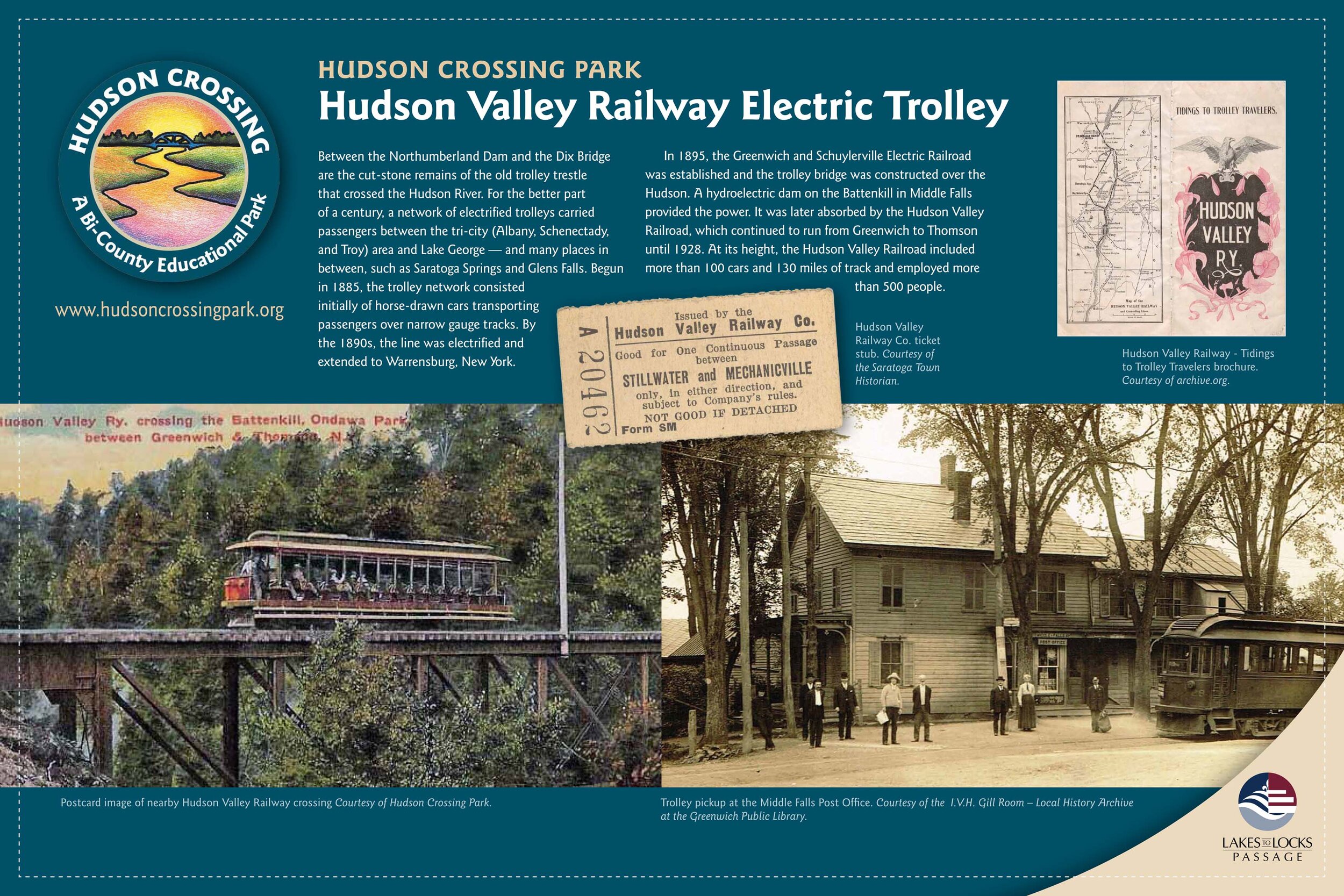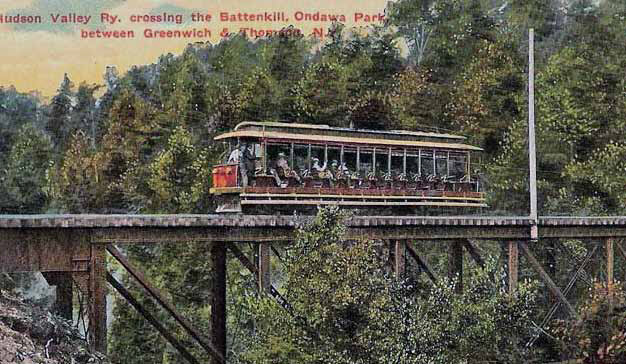Hudson Valley Railway Electric Trolley
Hudson Valley Railway Electric Trolley
Between the Northumberland Dam and the Dix Bridge are the cut-stone remains of the old trolley trestle that crossed the Hudson River. For the better part of a century, a network of electrified trolleys carried passengers between the tri-city (Albany, Schenectady, and Troy) area and Lake George — and many places in between, such as Saratoga Springs and Glens Falls. Begun in 1885, the trolley network consisted initially of horse-drawn cars transporting passengers over narrow-gauge tracks. By the 1890s, the line was electrified and extended to Warrensburg, New York.
In 1895, the Greenwich and Schuylerville Electric Railroad was established, and the trolley bridge was constructed over the Hudson. A hydroelectric dam on the Battenkill in Middle Falls provided the power. It was later absorbed by the Hudson Valley Railroad, which continued to run from Greenwich to Thomson until 1928. At its height, the Hudson Valley Railroad included more than 100 cars and 130 miles of track and employed more than 500 people.
Postcard image
of nearby Hudson Valley Railway crossing Courtesy of Hudson Crossing Park.
Trolley pickup at the Middle Falls Post Office.
Courtesy of the I.V.H. Gill Room – Local History Archive at the Greenwich Public Library
Hudson Valley Railway
Tidings to Trolley Travelers brochure. Courtesy of archive.org
Hudson Valley Railway Co. ticket stub.
Courtesy of the Saratoga Town Historian






